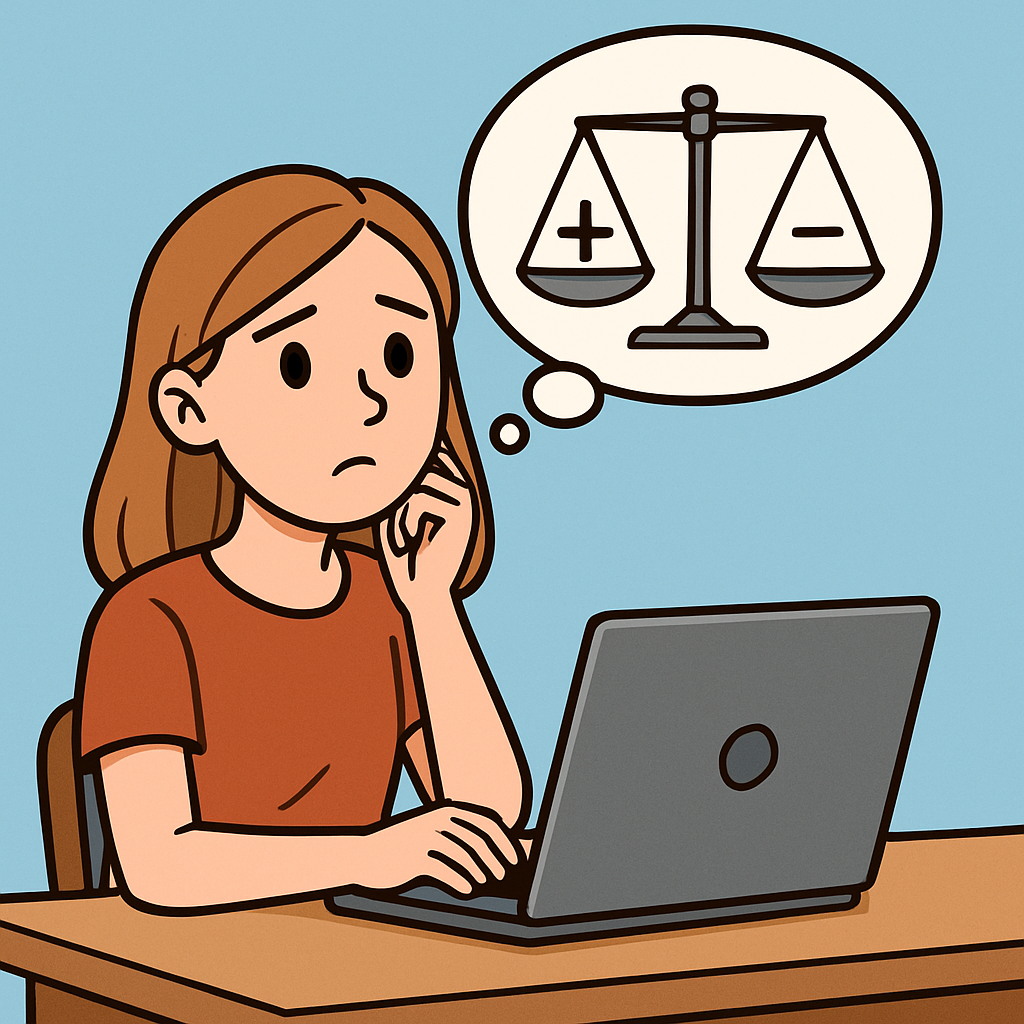 In this lesson, you will explore ethical and social issues related to computing technology. As computing becomes more integrated into our lives, it's important to understand its impacts on society, privacy, and fairness.
In this lesson, you will explore ethical and social issues related to computing technology. As computing becomes more integrated into our lives, it's important to understand its impacts on society, privacy, and fairness.
By the end of this lesson, you will:
Ethical issues in computing involve questions of right and wrong in the development and use of technology. It's important to note that these issues aren't often black and white; there are grey areas where determining what's right or wrong depends on the context, intentions, and outcomes.
For example, consider hacking: unauthorised access to a system is generally wrong and illegal, but ethical hackers are sometimes hired by companies to test and improve security vulnerabilities – is this always justifiable? Another example is intellectual property: downloading a pirated movie for personal use might seem harmless to some, but it could deprive creators of income – where do you draw the line between fair sharing and theft?
Here are some key ethical issues related to computing:
 Split into small groups of 2-4 people. If you are working alone, you can reflect individually by writing down your thoughts.
Split into small groups of 2-4 people. If you are working alone, you can reflect individually by writing down your thoughts.
Choose one of the key ethical issues from the 'Key Ethical Issues' step, such as Data Privacy and Protection or AI Bias.
Discuss or reflect on questions like:
For example, if your group chooses Cybersecurity and Hacking, you could discuss the ethics of 'white hat' hacking (hacking to improve security) versus 'black hat' hacking (hacking for harm), and share opinions on whether companies should hire ethical hackers.
 Social issues in computing involve the broader impacts of technology on society, communities, and individuals. Like ethical issues, they often have grey areas where the effects can be both positive and negative depending on context.
Social issues in computing involve the broader impacts of technology on society, communities, and individuals. Like ethical issues, they often have grey areas where the effects can be both positive and negative depending on context.
For example, social media platforms can foster global connections and support networks, but they can also enable cyberbullying that harms mental health – is the benefit of connectivity worth the risk of online harm? Another example is automation: it can increase efficiency and create new job opportunities in tech, but it might displace workers in traditional roles.
Here are some key social issues related to computing:
These issues highlight how computing can both connect and divide people in society.
 Split into small groups of 2-4 people. If you are working alone, you can reflect individually by writing down your thoughts.
Split into small groups of 2-4 people. If you are working alone, you can reflect individually by writing down your thoughts.
Choose one of the key social issues from the 'Social Issues in Computing' step, such as Digital Divide or Cyberbullying.
Discuss or reflect on questions like:
For example, if your group chooses Digital Divide, you could discuss how lack of internet access affects education in remote areas, and share opinions on whether it could be solved or not.